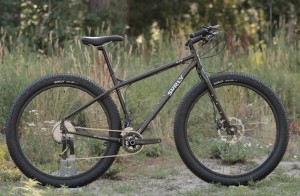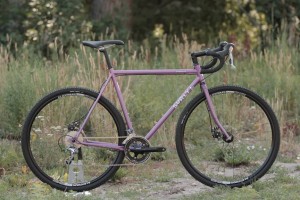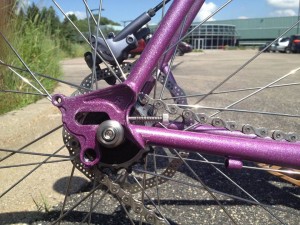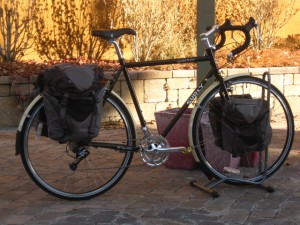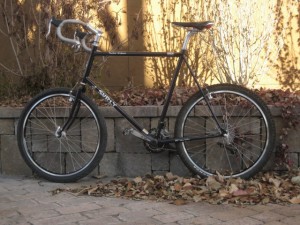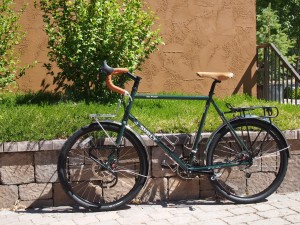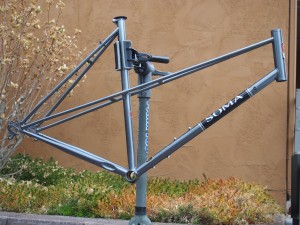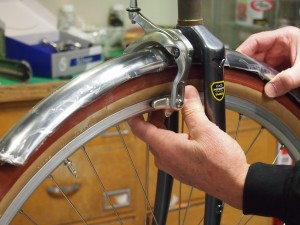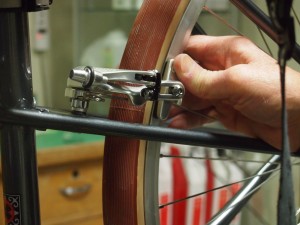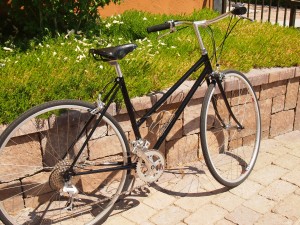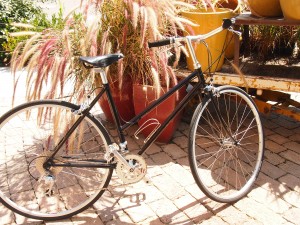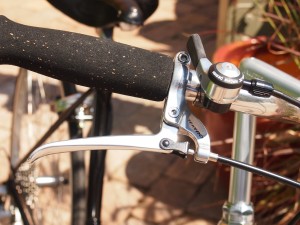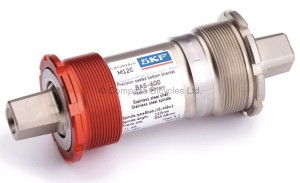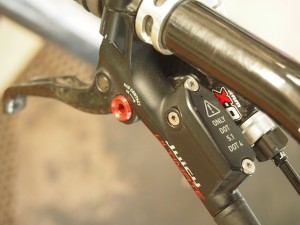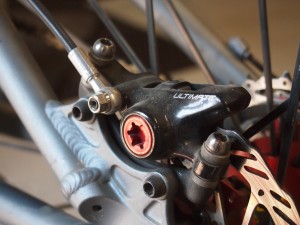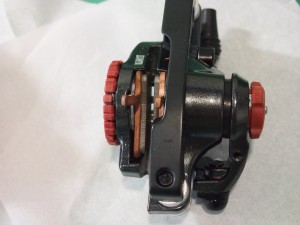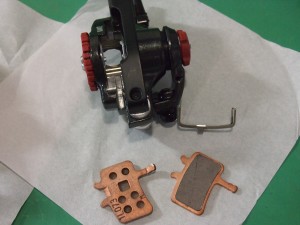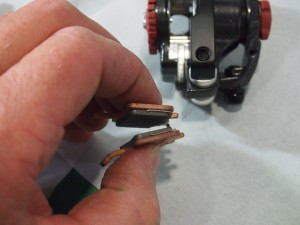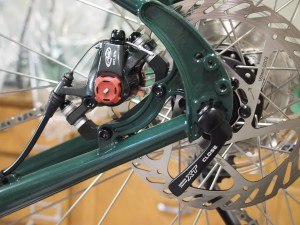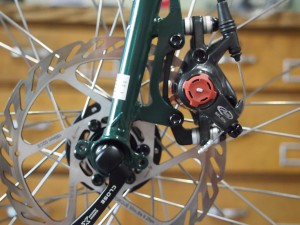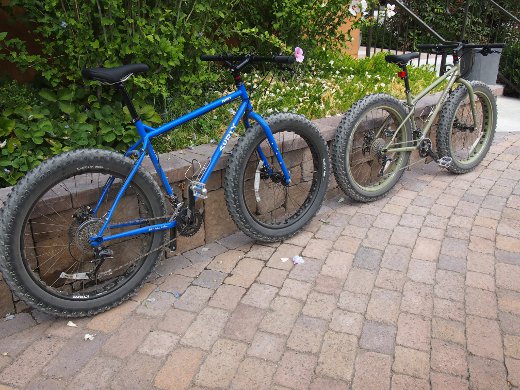
We had a chance to take the Surly fat bikes out this Labor Day weekend and this is my report.
From Bike Touring News H.Q. we did a quick 10.6 mile loop that took in some single track so we could see how the bikes handled.
I rode the standard Pugsley and Sky King was riding the Pug Ops bike. The main differences between the two, besides the color, are tabulated below:
| Component | Pugsley | Pug Ops |
|---|---|---|
| Rims | Large Marge Lite 65mm | Rolling Darryl 82mm |
| Tires | Surly Nate 3.8″ 27 t.p.i. | Surly Nate 3.8″ 120 t.p.i. |
| Crankset | Sram X-5 36/22 | Surly Offset double 36/22 |
| Rear Derailleur | Shimano Deore RD-M591 | Shimano LX RD-T670 |
| Cassette | shimano HG61 9 speed 11-32 | Shimano HG62 10 speed 11-34 |
| Shifters | Microshift Top Mount 3×9 | Shimano SLX Rapid Fire 3×10 |
So the Pug Ops gains a little more footprint by using wider rims and tires with a higher thread count. The higher thread count should make for a stronger and more supple casing for better handling at low tire pressures. Even though the tires on both bikes have the same nominal dimensions, the wider rim on the Pug Ops means that the tire is wide enough to potentially interfere with the chain when riding in the lowest gear. That’s why the Pug Ops comes with Surly’s offset double crankset.
The Ride
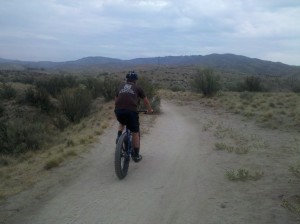
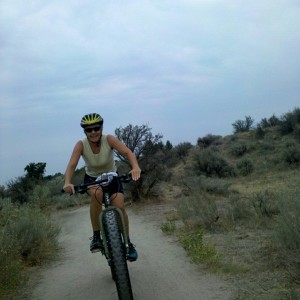
We started with about 20 p.s.i. in the rear tires and about 15 in the front but I let a little bit out for the downhill sections. (I need to get me one of those low pressure tire gauges when QBP has them back in stock)
The single track on this particular ride, and most of the other trails in this area, is sand….some of it smooth and hard, some of it with washboard stutter bumps and some short soft and loose sections.
Impressions
Well, as Ed Sanders of The Fugs said (but not about riding fat-bikes); “Shit, it was more fun than squashin’ tadpoles.”
–Gearing; The two chainrings combined with a 32 or 34 tooth big cog in the back provided low enough gearing for everything we did on this ride. I don’t know if the lack of a larger front chainring will be too limiting with regard to top-end speed.
–Handlebars; Let’s just say the Salsa bars that come stock on these bikes are less than optimal from a standpoint of comfort. The sweep angle is anti-ergonomic and made my wrists and the joint at the base my thumb ache after just a few minutes. That prompted a call to Jeff Jones the next day to order some of his Loop Bars. We will have those in stock for customers wanting a comfortable bar with multiple hand positions for their fat bikes.
–Shifters; I am a fan of top mount thumb shifters and not a fan of under the bar trigger shifters. ‘Nuff said.
–Handling;
–Climbing; Another fat bike I rode one time had the tendency for the front wheel to bounce around and/or become unweighted when climbing anything technical but this Pugsley stayed planted and it was easy to get the front wheel to go where I pointed it. And traction, obviously, is not the limiting factor on any climb with 4″ wide tires sprouting aggressive, wide spaced knobs.
–Descending; I’m not a fast descender on any bike but the Pugsley made me smile. Some of the chatter bumps were a little jarring and the chain slapping on the chainstay was annoying, but lower tire pressures could help smooth that out. The bike felt magnetically attached to the ground on the bigger rollers and knobs, it just sucked them up without trying to buck me off. Again, the traction is astonishing when going around corners with some speed. These tires have a round profile and the big buttress shaped knobs on the shoulders of the tread bite into the loose stuff.
Conclusion
This bike makes me want to ride more and that’s a good endorsement. My original feeling towards fatbikes was that they might be a little limited in versatility, but these things are fun! They roll over anything and make it possible to ride terrain you would have to push or carry other bikes over. Single track, dirt roads, snow, deep sand, wet sand, and loose gravel all become fair game. Actually, now that I am thinking about it these bikes may be more versatile and less limited in many ways than non-fatbikes. And the market segment seems to be growing which is good news for the consumer because that means more innovation and products down the pike. Get a fat-bike. You won’t regret it, if you live. (apologies to Mark Twain)

